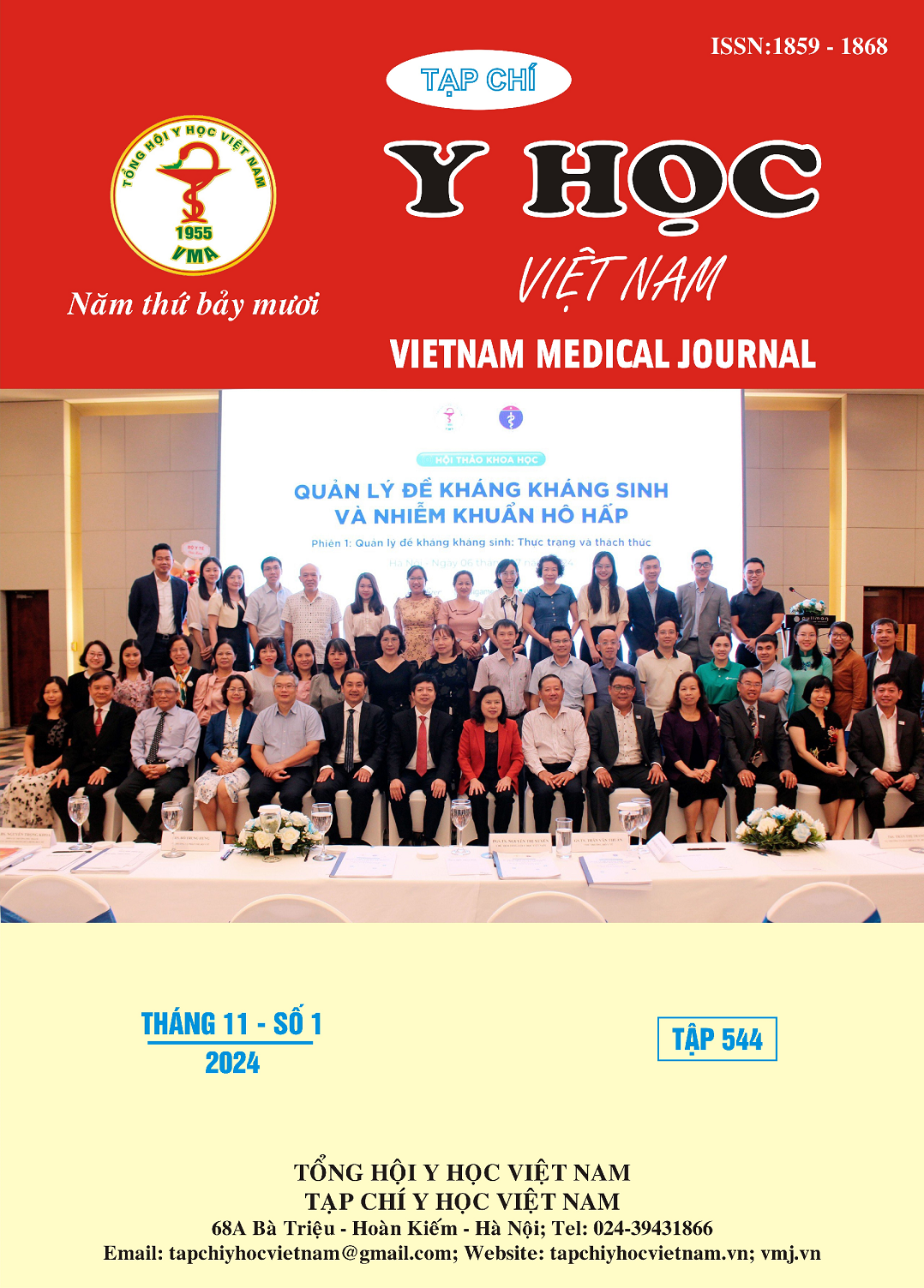CLINICAL AND PARACLINICAL CHARACTERISTICS OF CHOROIDAL HEMANGIOMA
Main Article Content
Abstract
Objective: (1) To describe the clinical characteristics of choroidal hemangioma at the Eye Clinic of the National Geriatric Hospital. (2) To describe the paraclinical characteristics of choroidal hemangioma. Patients and methods: A total of 29 patients diagnosed with choroidal hemangioma were examined and treated at the Eye Clinic of the National Geriatric Hospital over a 5-year period, from August 2018 to August 2023. A cross-sectional study. Results: - More than half of the patients (51.7%) did not have hemorrhage. Among those with hemorrhage, the most common type was mixed morphology (37.9%). - The most common symptoms, present in all patients, were BMST changes and exudation (100.0%). Other symptoms such as serous retinal detachment (62.1%), macular edema (58.6%), and retinal detachment (41.4%). - The most common lesions, present in all patients, were BMST changes and exudation (100.0%). Serous retinal detachment (65.5%), macular edema (58.6%), and hemorrhage (48.3%). - The most common OCT-A finding was surface damage (65.5%), while deep damage was less common (34.5%). - The most common tumor size was 2.00 mm, accounting for 34.5% of cases. The most frequent tumor location was adjacent to the macula, accounting for 37.9% of cases. Conclusion: Prospective studies are needed to monitor the changes in clinical and paraclinical characteristics in this patient group.
Article Details
Keywords
Choroidal hemangioma, clinical characteristics, paraclinical characteristics
References
2. Shields JA, Shields CL (2008). “Circumscribed choroidal hemangioma. In: Shields JA, Shields CL, editors. Intraocular Tumors: An Atlas and Textbook”. Philadelphia, PA: Lippincott Williams and Wilkins; 2008. pp. 230–245.
3. Scott IU, Alexandrakis G, Cordahi GJ, et al (1999). “Diffuse and circumscribed choroidal hemangiomas in a patient with Sturge-Weber syndrome”. Arch Ophthalmol. 1999;117:406–407.
4. Cheung D, Grey R, Rennie I (2000). “Circumscribed choroidal haemangioma in a patient with Sturge Weber syndrome”. Eye (Lond) 2000;14(Pt 2):238–240.
5. Jarrett WH, Hagler WS, Larose JH, et al (1976). “Clinical experience with presumed hemangioma of the choroid: Radioactive phosphorus uptake studies as an aid in differential diagnosis”. Trans Sect Ophthalmol Am Acad Ophthalmol Otolaryngol. 1976;81:862–870.
6. Reese AB, Hagerstown, MD: Harper and Row (1976). “Tumors of the Eye”.
7. Witschel H, Font RL (1976). “Hemangioma of the choroid. A clinicopathologic study of 71 cases and a review of the literature”. Surv Ophthalmol. 1976;20:415–431.
8. Lanzetta P, Virgili G, Ferrari E, et al (1995). “Diode laser photocoagulation of choroidal hemangioma”. Int Ophthalmol. 1995;1996;19:239–247.


